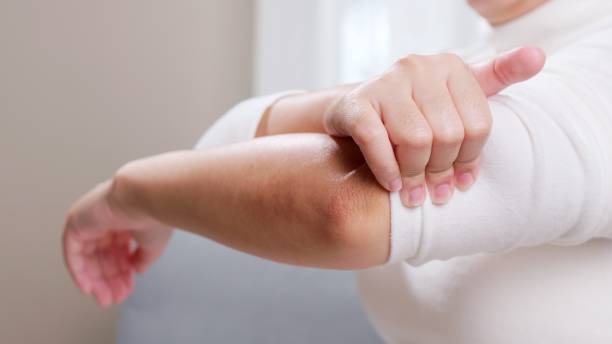The tailbone, or coccyx, is a small but significant part of our anatomy that plays a crucial role in maintaining balance and stability when sitting. Often overlooked, the health of your tailbone can have a profound impact on your overall well-being. Understanding the importance of coccyx health is essential for preventing discomfort and ensuring proper posture. Tailbone pain can arise from various causes, including prolonged sitting, injury, or poor ergonomics. Recognising these factors can help you proactively maintain optimal coccyx health.
One effective approach to alleviating tailbone pain is using specialised seating aids such as a coccyx cushion. These cushions are designed to provide targeted support and pressure relief to the tailbone area, promoting better sitting posture and reducing discomfort during extended periods of sitting. Incorporating ergonomic solutions into your daily routine can significantly enhance your comfort levels and support long-term spine health.
In addition, it’s essential to consider other aspects of foot health that can indirectly influence posture and spinal alignment. For instance, using a bunion corrector can help improve foot positioning and weight distribution while standing or walking. This holistic approach ensures that all elements contributing to musculoskeletal harmony are addressed, further supporting the overall maintenance of healthy posture and reducing strain on the lower back and tailbone region.
By prioritising direct interventions for coccyx care and complementary measures for broader postural support, you pave the way for enhanced physical well-being.
Coccyx Cushion to Alleviate Pain
A cushion for the coccyx, often called a pressure relief cushion, is ingeniously designed to alleviate discomfort and pain in the coccygeal region. Its ergonomic design is crucial in providing support and facilitating pain reduction. The cushion typically features a cut-out section at the back, which allows the tailbone to “float” rather than being compressed against hard surfaces. This design effectively reduces pressure on the coccyx, benefiting individuals suffering from coccydynia or lower back pain.
The pain reduction mechanism distributes body weight evenly across the seating surface. This alleviates direct pressure on sensitive areas and promotes better posture by encouraging proper spinal alignment. By supporting the natural curve of the spine, these cushions help reduce strain not only on the coccygeal region but also throughout the entire back.
In addition to their practical benefits, many cushions are made from materials such as memory foam or gel that further enhance comfort by moulding to an individual’s unique shape. This customisable support ensures that each user experiences optimal relief tailored to their specific needs, making it an essential accessory for anyone seeking to manage discomfort during prolonged periods of sitting.
Top Benefits for Everyday Comfort
A cushion for the coccyx can be a game-changer when enhancing everyday comfort, especially for those sitting for prolonged periods.
- One of the primary benefits is its ability to promote improved posture. These cushions help prevent slouching and reduce strain on your back muscles by encouraging the spine to align correctly.
- Another significant advantage is the even distribution of pressure. Traditional seating can concentrate pressure on your tailbone, leading to discomfort or pain over time. A cushion alleviates this by redistributing weight across a larger surface area, which not only enhances comfort but also aids in tailbone pain management.
- Increased comfort while sitting is essential for individuals dealing with chronic discomfort or recovering from an injury. These cushions are designed with materials that provide support and cushioning simultaneously, making them ideal for reducing irritation and promoting healing in sensitive areas.
Incorporating a cushion into your daily routine can lead to noticeable improvements in comfort and posture, making it an invaluable tool for anyone seeking relief from prolonged sitting-related issues.
Types and Their Unique Features
Selecting the right cushion can make a significant difference when alleviating coccyx pain. Each offers unique features tailored to specific needs among the various types available.
Memory Foam Cushion: Known for its ability to conform to the body’s shape, a memory foam cushion provides personalised support that helps distribute weight evenly and reduce pressure on the tailbone. This cushion is particularly beneficial for individuals who spend extended periods seated, as it can enhance comfort over time.
Gel-enhanced Seat Cushion: Combining gel layers with traditional cushioning materials, these cushions offer superior cooling properties while maintaining support. The gel component helps dissipate heat and keeps users comfortable during long sitting sessions, making it ideal for office chairs or car seats.
Wedge-Shaped Pillow: The wedge-shaped pillow for coccyx pain tilts the pelvis slightly forward. This positioning encourages better posture and relieves pressure on the coccyx area by lifting it away from hard surfaces. Wedge-shaped pillows are often recommended for those with chronic tailbone discomfort or seeking postural improvement.
Each of these cushions caters to different preferences and requirements, ensuring that individuals can find an option that best suits their lifestyle and alleviates their specific symptoms effectively.
Maintenance Tips and Tricks
Proper care and maintenance of your coccyx cushion are essential to ensure longevity and effectiveness. Understanding the washing instructions for cushions is a crucial first step.
- Most cushions come with a removable cover that can be machine-washed gently using mild detergent. It’s important to avoid using bleach or harsh chemicals, as these can damage the fabric and reduce its lifespan.
- Always check the care label for specific instructions related to your cushion.
- Regular fluffing is recommended to maintain the shape and durability of your cushion. Gently patting or shaking the cushion can help redistribute any filling that may have shifted during use, ensuring even support across its surface.
- Additionally, rotating your cushion periodically will prevent uneven wear and prolong its life.
- For those cushions with foam interiors, keeping them away from direct sunlight is advisable, as prolonged exposure can cause deterioration of the material.
- Allow your cushion to air out by placing it in a well-ventilated area; this helps prevent odours from developing over time.
Following these simple yet effective tips ensures your cushion remains comfortable and supportive for years.



